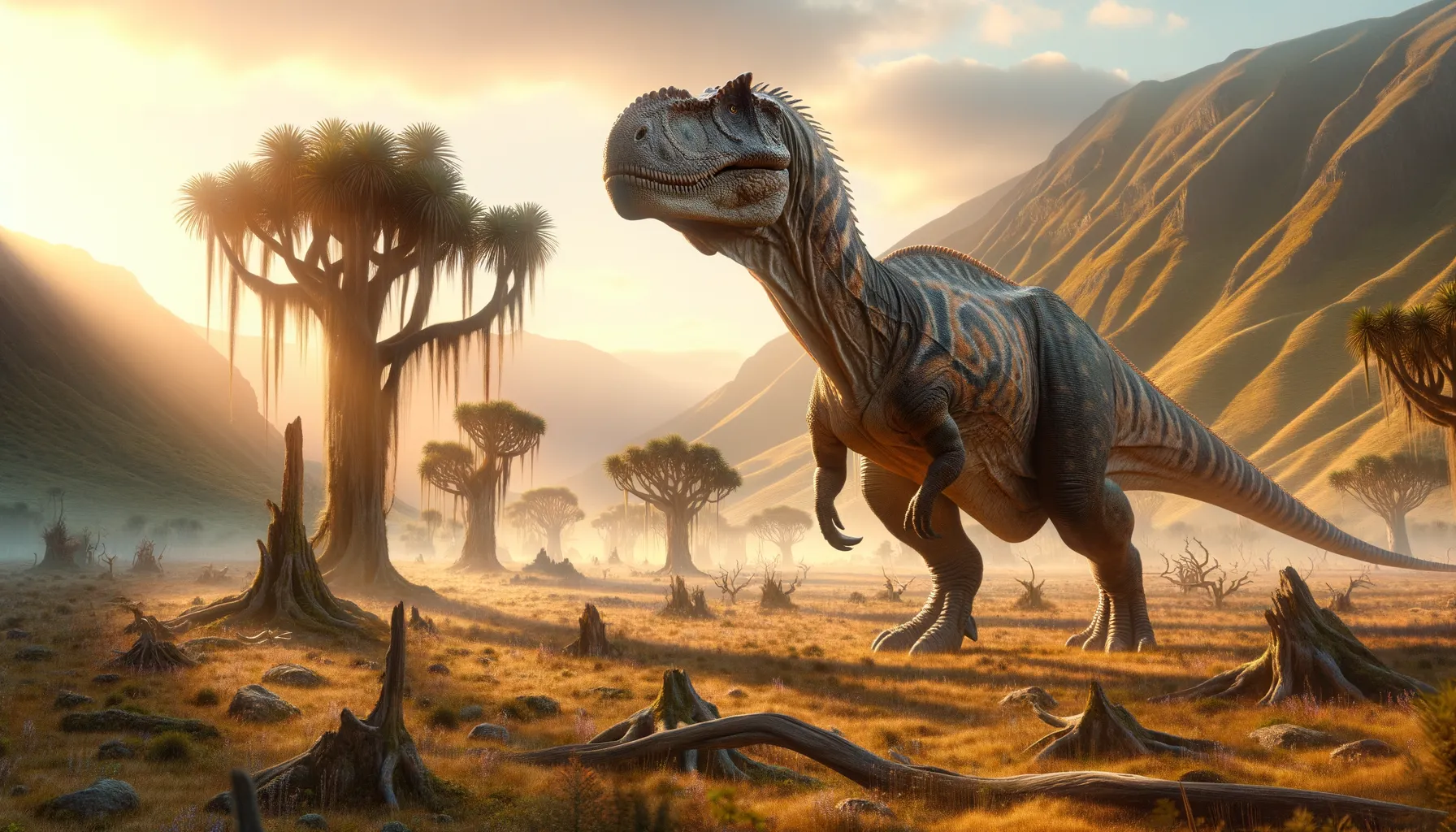
Soriatitan
A titan among early Cretaceous giants!
Period
Cretaceous
Length
Estimated length of about 43 feet.
Height
Approximately 13 feet tall at the shoulder.
Weight
Estimated to weigh around 24 tons.
Soriatitan was a massive plant-eating dinosaur that roamed the lands of what is now Spain during the Early Cretaceous period. Its large size and stature made it an imposing figure among the prehistoric landscape. Known through fossil discoveries primarily in the Iberian Peninsula, this dinosaur adds to the understanding of sauropod diversity and distribution during its era.
Diet
Soriatitan was herbivorous, primarily consuming the lush vegetation available during the Cretaceous. Its diet included a variety of plants and possibly coniferous trees that were abundant in its environment.
Hunting
As a herbivore, Soriatitan did not hunt but instead foraged for plants. Its large body size enabled it to access both low-lying bushes and higher tree foliage.
Environmental challenges
Soriatitan faced environmental challenges such as fluctuating climates that affected plant growth and food availability. Competition for resources with other herbivores would have been a constant challenge. Predators also posed a threat, though Soriatitan's size and possibly travel in herds would have offered some protection.
Speed
Soriatitan was relatively slow-moving.
Lifespan
Potentially several decades long.
First discovery
Discovered in Spain in 2014.
Fun Facts
- Soriatitan is a genus of sauropod dinosaur that lived during the Early Cretaceous period.
- Its fossils were discovered in Spain, making it a part of the rich European dinosaur biodiversity.
- Soriatitan is estimated to have been around 14 meters long, roughly the length of a school bus.
- This dinosaur belonged to the Brachiosauridae family, known for their long necks and massive sizes.
- It was a herbivore, feeding on plants at different heights thanks to its long neck.
- Soriatitan's discovery adds valuable information about the distribution of large herbivorous dinosaurs in the Cretaceous period.
- The name 'Soriatitan' means 'Soriana Giant,' named after the Soria Province in Spain where it was found.
Growth and Development
Soriatitan likely had a lengthy growth period, taking several years to reach full adult size. Juveniles would have been vulnerable to predation, necessitating hiding or protection by adults during early development. Growth spurts may have occurred during favorable environmental conditions with ample food supply.
Habitat
The habitat of Soriatitan included forested regions and open plains with abundant plant life. The climate was warmer and more humid than today, allowing for diverse and dense vegetation. Proximity to water sources would have been crucial for survival.
Interaction with other species
Soriatitan may have shared its environment with other herbivorous dinosaurs, necessitating competition for food. It also coexisted with carnivorous species that could have preyed on young or weak individuals. Symbiotic relationships with smaller animals could have included the dispersal of seeds through its digestive system.
Natural lifespan
Soriatitan could have lived for several decades under favorable conditions.
Reproduction
Soriatitan likely reproduced by laying eggs, as is typical for dinosaurs. Nesting sites would have been chosen for safety from predators and environmental threats. Parental care in dinosaurs varies, but the young might have been left to fend for themselves soon after hatching.
Social behaviour
Soriatitan may have lived in groups or herds, providing safety in numbers against predators. Social structures within these groups could have included leading adults and younger members. Communication methods likely included vocalizations and visual displays, like many other dinosaurs.
Fossil locations
Soriatitan fossils have primarily been unearthed in Spain, particularly in regions that were favorable habitats during the Cretaceous. These discoveries help paint a picture of the ecosystems in which they lived. The remains indicate the geographical distribution and diversity of sauropods in the area.
